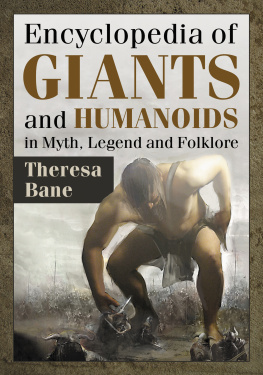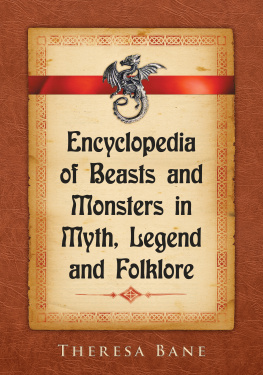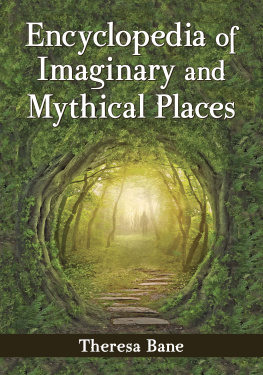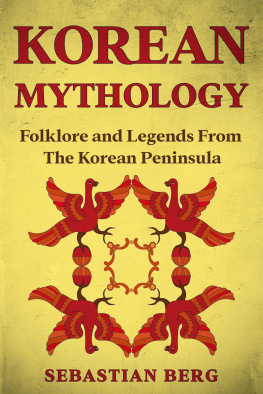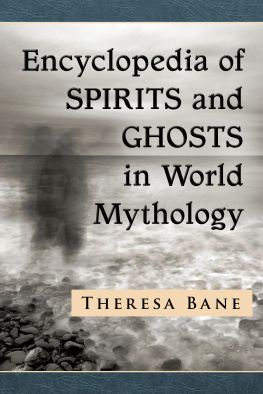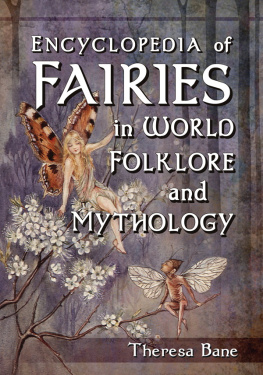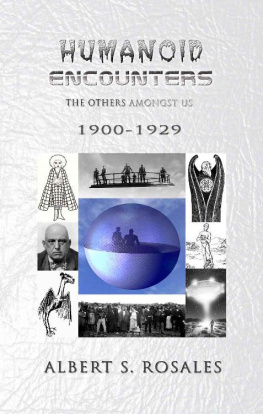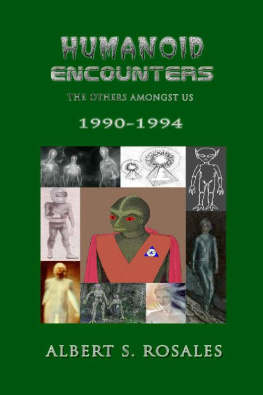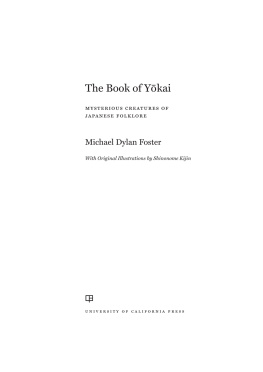
Also by THERESA BANE AND FROM MCFARLAND
Encyclopedia of Spirits and Ghosts in World Mythology (2016)
Encyclopedia of Beasts and Monsters in Myth, Legend and Folklore (2016)
Encyclopedia of Imaginary and Mythical Places (2014)
Encyclopedia of Fairies in World Folklore and Mythology (2013)
Encyclopedia of Demons in World Religions and Cultures (2012)
Encyclopedia of Vampire Mythology (2010)
Encyclopedia of Giants and Humanoids in Myth, Legend and Folklore
Theresa Bane

McFarland & Company, Inc., Publishers
Jefferson, North Carolina
e-ISBN: 978-1-4766-2338-2
LIBRARY OF CONGRESS CATALOGUING DATA ARE AVAILABLE
BRITISH LIBRARY CATALOGUING DATA ARE AVAILABLE
2016 Theresa Bane. All rights reserved
No part of this book may be reproduced or transmitted in any form or by any means, electronic or mechanical, including photocopying or recording, or by any information storage and retrieval system, without permission in writing from the publisher.
Front cover illustration 2016 iStock
McFarland & Company, Inc., Publishers
Box 611, Jefferson, North Carolina 28640
www.mcfarlandpub.com
To Don Shelor
A twenty-eight-year veteran in our countrys military,
father of nine, and grandfather to twenty.
Thank you for your service, sir!
Preface
This volume takes as its subject matter folkloric, legendary, and mythological humanoids. Interestingly, as this projects research was undertaken I discovered while there are anthropomorphic beings, creatures, deities, and the like in the fables, religions, and stories of many cultures there was no book available that covered the subject. True, there are a few books that cover GIANTS, both biblical and historically tall individuals, as well as some works that detail the VALKYRIES of Norse mythology. However the primary foci of these works were not solely humanoids, no matter how thoroughly they covered their subject matter. Again, I found myself writing the very book I wished I could purchase.
Typically when I begin working on one of my encyclopedias, I swivel my chair and begin consulting the books in my personal library, a large collection that has been amassed over the years. This time there was no need. Prior to this book, I wrote an encyclopedia of mythological creatures that I intended to be the be-all, end-all of creature reference books. Normally it takes me about a year to write an encyclopedia, but the creature book was such rich subject matter, even with the considerable exclusions I placed on potential entries, it took a lengthy extension and two years to complete. I was working, on average, eight hours a day, six days a week. When it was finished I had written over 500,000 words and just fewer than 4,000 entries including everything I wanted from rare entries of well-known mythologies to exotic creatures in lore and religions. It was large and impressive to behold but perhaps too unwieldy to be of practical use. When the publisher approached me with the idea of dividing it up into a few smaller but more tightly focused books, I had to side with them (as soon as I recovered from the apoplexy).
I consulted with my beta-readers, librarian friends, and fellow researchers for their best brainstormed ideas. The colossus would be divided into three encyclopedias: one of creatures, one of humanoids, and one of spirits. Once I had devised criteria for each and reworked the material as three manuscripts, I found I was most pleased with the results.
This book, like my other books, does not contain fictional creations from the imaginations of authors for the purpose of creating a fictional work. No mythology includes such characters in its pantheon. No legends of their exploits are told and retold around campfires. Although many of them are well known, these fictional characters are not candidates for inclusion in this work.
Also omitted were those hominids, simian-like cryptids living, allegedly, wild and unchecked in the wildernesses throughout the world. Bigfoot and swamp apes alike are not herein. Whether or not such creatures do or ever did exist, their realm is that of cryptozoology, not myth, legend or folklore.
Indigo children as well as human and grey alien hybrids were not counted among the potential entries for this book, the trope of aliens among us being outside the intended scope. If readers are interested in that subject, Barlowes Guide to Extraterrestrials (1979) is an excellent book.
Unaccustomed as I am to accepting purported and unsubstantiated facts as being true, I also avoided speculations as to what any given being may have actually been or how it could have been misidentified by an ancient eyewitness and is in truth a creature any modern reader would now recognize. Is it possible Marco Polo was looking at a Thompson gazelle and not a unicorn? Yes, it is. Was I there to witness what he was looking at and under what conditions the sighting took place? No, and for that that reason, I will not attempt to correct him or any other long-ago writer or observer whose work does fall within my criteria and was accepted for inclusion.
The objective here is to fully document as many of the folkloric, legendary, and mythological beings as possible into one work so other researchers may have a historically accurate and reliable resource not polluted with personal opinion and speculation. It is my dearest hope for academics, authors, researchers and the like to possess a copy of each of my books, so that they may find all reliable and legitimate information on an entry in one location.
Every effort was made to include for each entry all of the available information on a being as well as the name of the myth or story for which it is best known. Included is the creatures country of origin, a physical description, what it hunts and how it pursues its prey. If the being is sentient, its personality and moral alignment was also included. Some beings are clearly defined as good or evil whereas others are fickle in their intent, susceptible to flattery, easily offended by even the slightest of transgressions, and prone to random acts of either charity or devastation. Occasionally there is a pronunciation guide which I was able to provide, but sadly not as often as I would have liked. As always, some entries are longer and more detailed than others, but this is only because the people who originated the being fleshed out its history; a short entry exists not because I chose to make it brief but rather because the information available to discover was limited. A quick glance at the bibliography will prove it was not from lack of trying.
The entries are presented in alphabetical order in a single sequence for ease of reference. I have provided a thorough index, which I consider the very life blood of a book. I have been told time and again by authors and fellow researchers they often do not know exactly what they are looking for but have an idea. For instance, if they wanted to know the name of a specific JOTUN who had once shared an adventure with Thor they could look up the words JOTUN and Thor in the index and see what pages each entry had in common to narrow their search. If an author was looking to add a monster to their story but all they knew for certain was it had to be a nocturnal predator, they could look up the word NOCTURNAL rather than scan through the pages of the book in search of a creature that would fit their needs.
Next page
